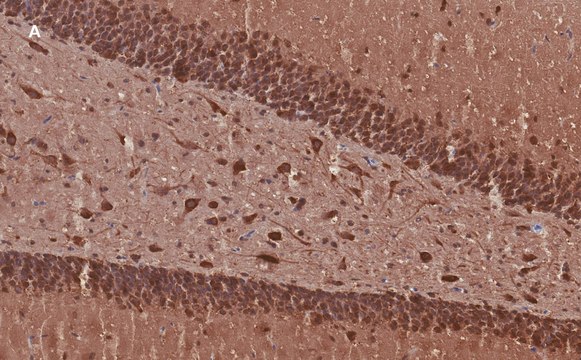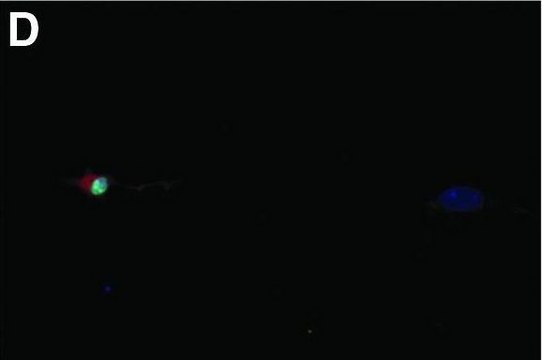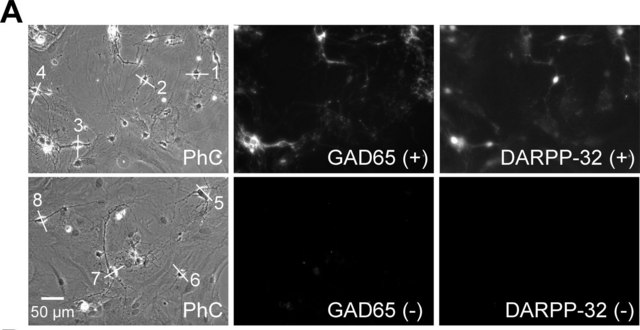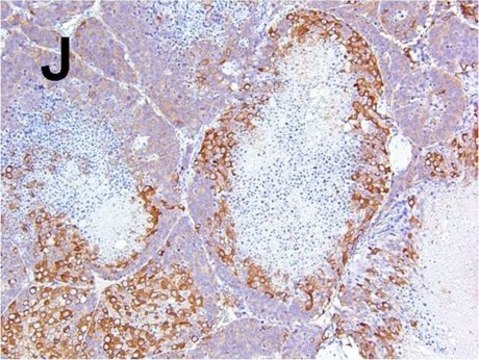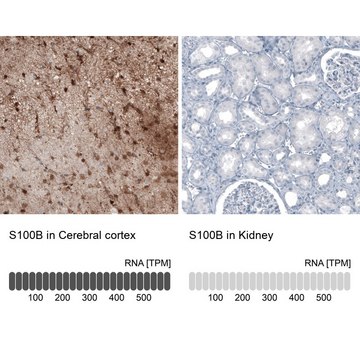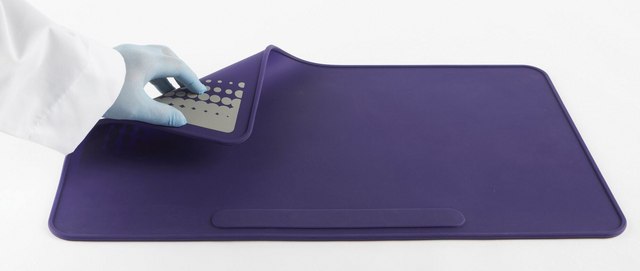SAB1304117
ANTI-GSX2 (C-TERM) antibody produced in rabbit
IgG fraction of antiserum, buffered aqueous solution
Synonym(s):
GS homeobox 2, GSH2, GSX2
Sign Into View Organizational & Contract Pricing
All Photos(1)
About This Item
UNSPSC Code:
12352203
NACRES:
NA.41
Recommended Products
biological source
rabbit
Quality Level
conjugate
unconjugated
antibody form
IgG fraction of antiserum
antibody product type
primary antibodies
clone
polyclonal
form
buffered aqueous solution
mol wt
32031 Da
species reactivity
human
technique(s)
western blot: 1:1000
NCBI accession no.
UniProt accession no.
shipped in
wet ice
storage temp.
−20°C
Physical form
Purified polyclonal antibody supplied in PBS with 0.09% (W/V) sodium azide. This antibody is purified through a protein A column, followed by peptide affinity purification.
Disclaimer
Unless otherwise stated in our catalog or other company documentation accompanying the product(s), our products are intended for research use only and are not to be used for any other purpose, which includes but is not limited to, unauthorized commercial uses, in vitro diagnostic uses, ex vivo or in vivo therapeutic uses or any type of consumption or application to humans or animals.
Not finding the right product?
Try our Product Selector Tool.
Storage Class Code
10 - Combustible liquids
WGK
nwg
Flash Point(F)
Not applicable
Flash Point(C)
Not applicable
Regulatory Information
新产品
Choose from one of the most recent versions:
Certificates of Analysis (COA)
Lot/Batch Number
Don't see the Right Version?
If you require a particular version, you can look up a specific certificate by the Lot or Batch number.
Already Own This Product?
Find documentation for the products that you have recently purchased in the Document Library.
Joshua A Bagley et al.
Nature methods, 14(7), 743-751 (2017-05-16)
Human brain development involves complex interactions between different regions, including long-distance neuronal migration or formation of major axonal tracts. Different brain regions can be cultured in vitro within 3D cerebral organoids, but the random arrangement of regional identities limits the
Heather Chapman et al.
Developmental biology, 442(1), 115-126 (2018-07-11)
The homeobox gene Gsx2 has previously been shown to inhibit oligodendroglial specification in dorsal lateral ganglionic eminence (dLGE) progenitors of the ventral telencephalon. The precocious specification of oligodendrocyte progenitor cells (OPCs) observed in Gsx2 mutants, however, is transient and begins
Daijiro Konno et al.
Development (Cambridge, England), 146(15) (2019-08-03)
The spatiotemporal identity of neural progenitors and the regional control of neurogenesis are essential for the development of cerebral cortical architecture. Here, we report that mammalian DM domain factors (Dmrt) determine the identity of cerebral cortical progenitors. Among the Dmrt
Vikram Kohli et al.
Developmental dynamics : an official publication of the American Association of Anatomists, 247(1), 222-228 (2017-07-27)
The lateral ganglionic eminence (LGE) in the ventral telencephalon is a diverse progenitor domain subdivided by distinct gene expression into a dorsal region (dLGE) that gives rise to olfactory bulb and amygdalar interneurons and a ventral region (vLGE) that gives
Shenyue Qin et al.
Neural development, 12(1), 13-13 (2017-08-18)
Olfactory bulb (OB) interneurons are known to represent diverse neuronal subtypes, which are thought to originate from a number of telencephalic regions including the embryonic dorsal lateral ganglionic eminence (dLGE) and septum. These cells migrate rostrally toward the OB, where
Our team of scientists has experience in all areas of research including Life Science, Material Science, Chemical Synthesis, Chromatography, Analytical and many others.
Contact Technical Service